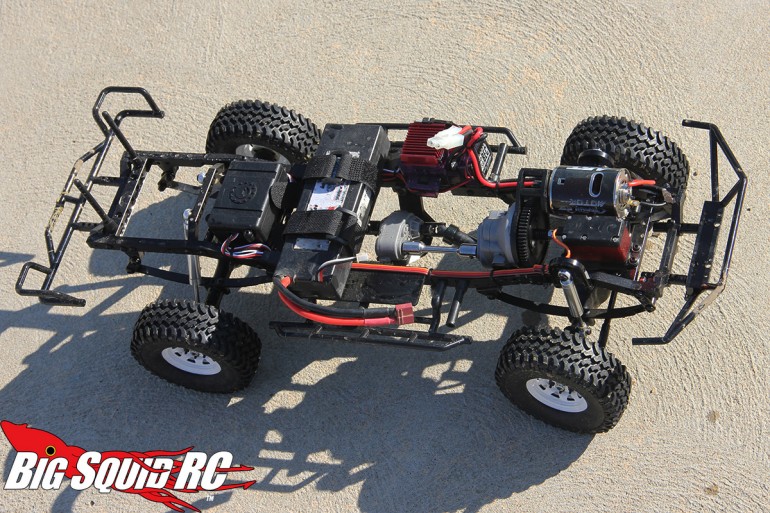Everybody’s Scalin’ – Lipo Tips for the Trail
It’s been a long time since I’ve discussed batteries which, shame on me, are often the subject of e-mails that I receive from noobs. I’ve neglected the topic for far too long, so here we go. Here are a few tips on selection and safety, as it pertains to r/c trail trucks. Let’s do it scatter-shots style.
Battery mAh and C rating – Think of mAh as your gas tank size, and the C (aka discharge) rating as how fast you’ll go through said fuel. A higher C rating means a battery will have more “pop”, but you’ll go through it faster and have more heat.
I think that higher discharge rates are great for racing applications, but for my trail truck batteries the most I usually go is a ranking of 50c. I find that running cooler is way more important that the little bit of speed you’ll gain from a peppier pack, as most trail runs are very long endeavors.
As for mAh, anything over 5,000 is pretty good. A battery with 5k mAh and a discharge of 50c can last you a couple hours on typical low throttle trail usage. Do yourself a favor and get something that has over 8000, though, as prices on packs of that size have dropped considerably in recent years. They will last FOR-EV-ER.
Cell Count – 2S and 3S refers to the cell count of the battery. 2S is much milder and is generally easy on your electronics, whereas 3 usually means mega-torque, higher speeds and way more heat involved. Either can work fine in stock RTR style applications, but know that 3S can drastically shorten motor life for an el cheapo setup.
For those that like power in their scalers, like me, I prefer going with a nice brushless system and running it on 2S. Then you can have speed, power, and lower ambient temps. I’ve just personally never had good experiences with 3S on long runs as it seems stuff is always running way too hot. Some friends of mine swear by 3 cells…but hey, this is my column so I gotta go with what I know best.
Soft or Hard Pack?– I’ve run both styles over the years, but I’m much more comfortable with a hard case. I enjoy crawling some very gnarly stuff, particularly hill climbing at high elevations (I love the thrill of it), and I’d be scared that a soft case would get punctured somehow during the dismount. If you enjoy more relaxed crawling though, soft cases are totally fine. They are actually a tad bit cooler! I just prefer the safety of a hard pack, always.
How many do you need? – It’s always best to have at least two batteries, and that goes for ANY type of r/c that runs off a single pack. Packs can dump or puff out of nowhere, and who wants to have their fun ruined if that’s the case? This becomes even more important if you are on a long trail run and the trailhead/camp with all your supplies is far away. I’d recommend grabbing a Lipo bag and keeping one with you in a trail backpack. I used to just keep one stuffed in my shorts until about 2 years ago when I tripped and fell and landed on top of the battery. Don’t worry, the battery was fine. My thigh, however, was not.
Hopefully that helps you, fair noob! Any additional questions on pack selection for a specific truck, feel free to drop me a line at Doug at bigsquidrc dot com. I’ll be happy to help as best I can!


